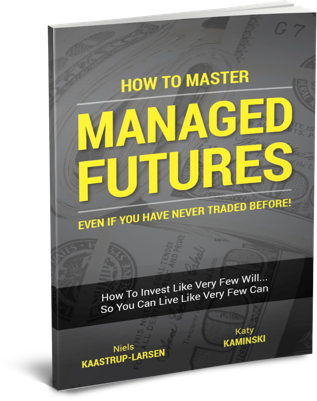CTAs: Equity Hedge, Crisis Alpha, Long Volatility – True or False?

By Moritz Seibert, edited by Niels Kaastrup-Larsen
Many CTAs emphasize that their products can produce “crisis alpha,” provide an “equity hedge” and enhance the overall return profile by being “long volatility.” This post puts these (highly attractive) features into perspective.
We assume a systematic trend following program trading many different futures markets, long and short, with a medium to long-term holding period. The majority of managed futures AUM are linked to programs of that sort.
Equity Hedge: The purpose of a hedge is to reduce, or even neutralize, the impact of a price movement in one asset by holding an offsetting position in another asset (a “perfect” hedge reduces risk to zero, except for the cost of the hedge). Common equity hedges are: (a) long stock vs short equity index futures; (b) long stock vs long put options on the same stock or equity indexes; (c) long stock vs long equity volatility.
"a “perfect” hedge reduces risk to zero, except for the cost of the hedge"
During the past years most trend following CTAs were able to generate attractive returns on equity down-days (they either lost less than the equity markets on that day or, even better, produced a gain). As a result, many investors concluded that CTAs can hedge their portfolio’s equity risk. Such view is misguided, especially since (a) CTAs do not typically trade any of the hedges outlined above, and (b) because these attractive returns were primarily the result of a simultaneous long exposure to bond and interest rates futures, i.e., they were not the result of a particular skill.
A long bond position is a very unreliable equity hedge (as the period May-June 2013 has clearly shown). Trend following CTA and risk-parity investors should thus not take the recent negative bond-equity correlation for granted, especially not in the current interest rate environment. Short-term CTAs can provide skill-based protection on equity down-days, but investors in longer-term trend following strategies should reconsider the CTA = equity hedge equation.
Equity Hedge = False
Crisis Alpha: First of all, I believe trend following CTAs generate alpha regardless of crises. It’s just that this alpha becomes very strong and visible during major corrections and bear markets. Crises tend to trigger divergence in market behavior, resulting in strong and unrelated price trends and hence an ideal trading environment for trend following CTAs. Their returns during these periods tend to be particularly strong and therefore highly valuable to an investor’s portfolio. So, yes, trend following strategies can produce crisis alpha.
Crisis Alpha = True
Long Volatility: The notion that CTAs are long volatility is probably owed to (a) the observation that their returns have been comparatively strong during crises (see above), which are high volatility periods with strong price moves, (b) the endeavors to replicate trend following returns through a portfolio of (look back) straddles, whose prices are sensitive to volatility, and (c) the fact that stop-based trend following strategies are designed to let winning trades run while cutting losing trades short, thereby producing the payout profile of a call option.
To capitalize on the edge of a trend following trading system, volatility is a requirement. That’s because volatility is not only risk but also opportunity, and it’s a necessary ingredient to make the trading system work. Without volatility, trend following CTAs could not be making money because prices wouldn’t move (disregarding the theoretically possible but practically unrealistic scenario in which prices move linearly up or down while realizing zero volatility).
But, volatility by itself is not enough because it is un-directional and mean-reverting, meaning that volatility without price direction would chop and whipsaw a trend following system to the bitter end. That’s why trend following strategies do not exhibit Vega, i.e., the value of the system does not change due to a change in volatility alone. Volatility and direction (trend) need to coincide to have an impact. As a result, trend following strategies can exhibit sensitivities of higher order than Vega, but the statement that CTAs are simply long volatility is incorrect.
Long Volatility = False
Long Volatility + Price Direction = True
Conclusion: Trend following strategies display many attractive return attributes (e.g., a positively skewed return distribution). However, some of them have been taken out of context and fail to describe the characteristics of a trend following system.
A future post will focus on how non-trend following strategies (e.g., mean reversion) may react to the features presented in this post.
Most Comprehensive Guide to the Best Investment Books of All Time

Most Comprehensive Guide to the Best Investment Books of All Time
Get the most comprehensive guide to over 300 of the BEST investment books, with insights, and learn from some of the wisest and most accomplished investors in the world. A collection of MUST READ books carefully selected for you. Get it now absolutely FREE!
Get Your FREE Guide HERE!





